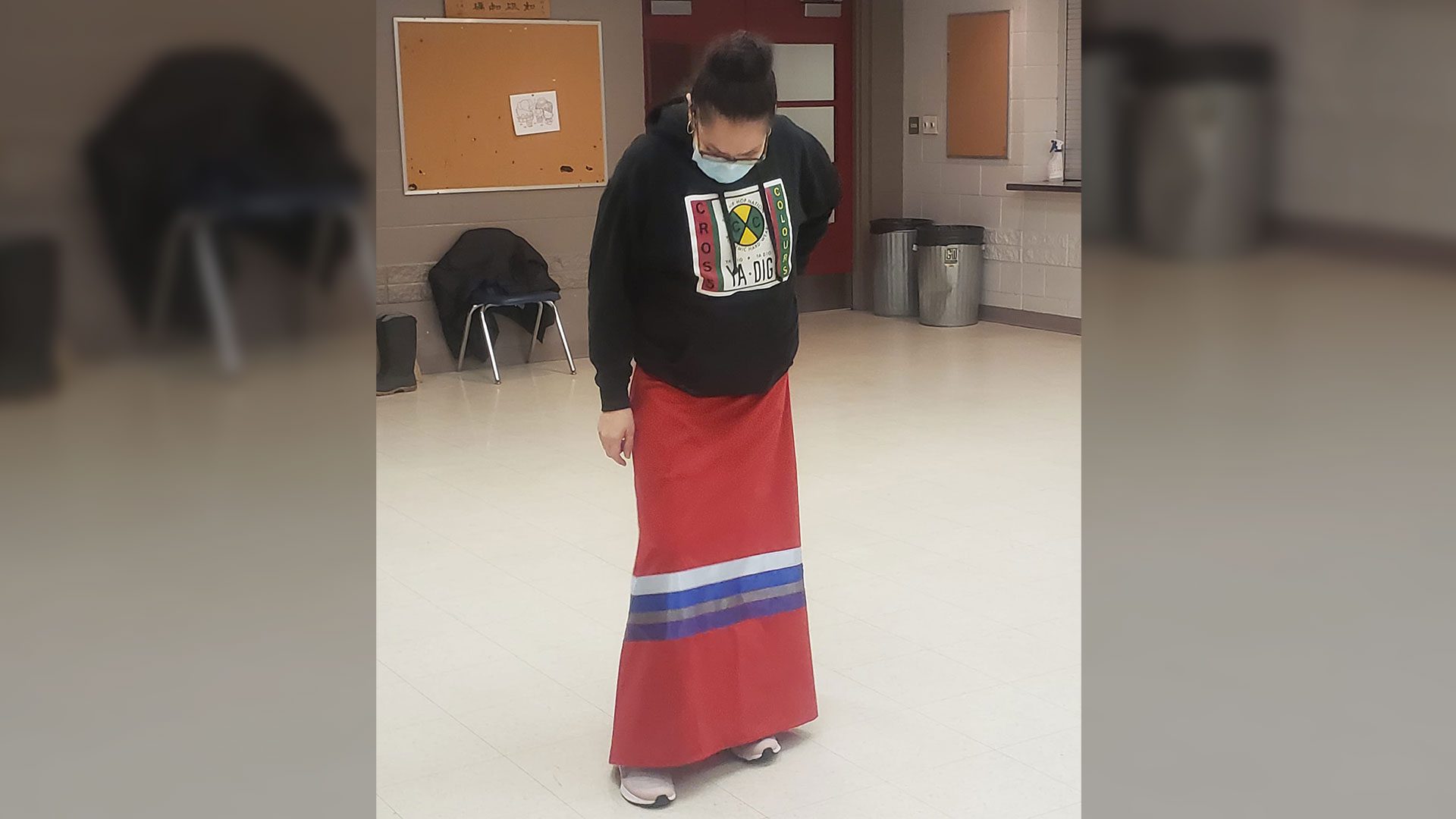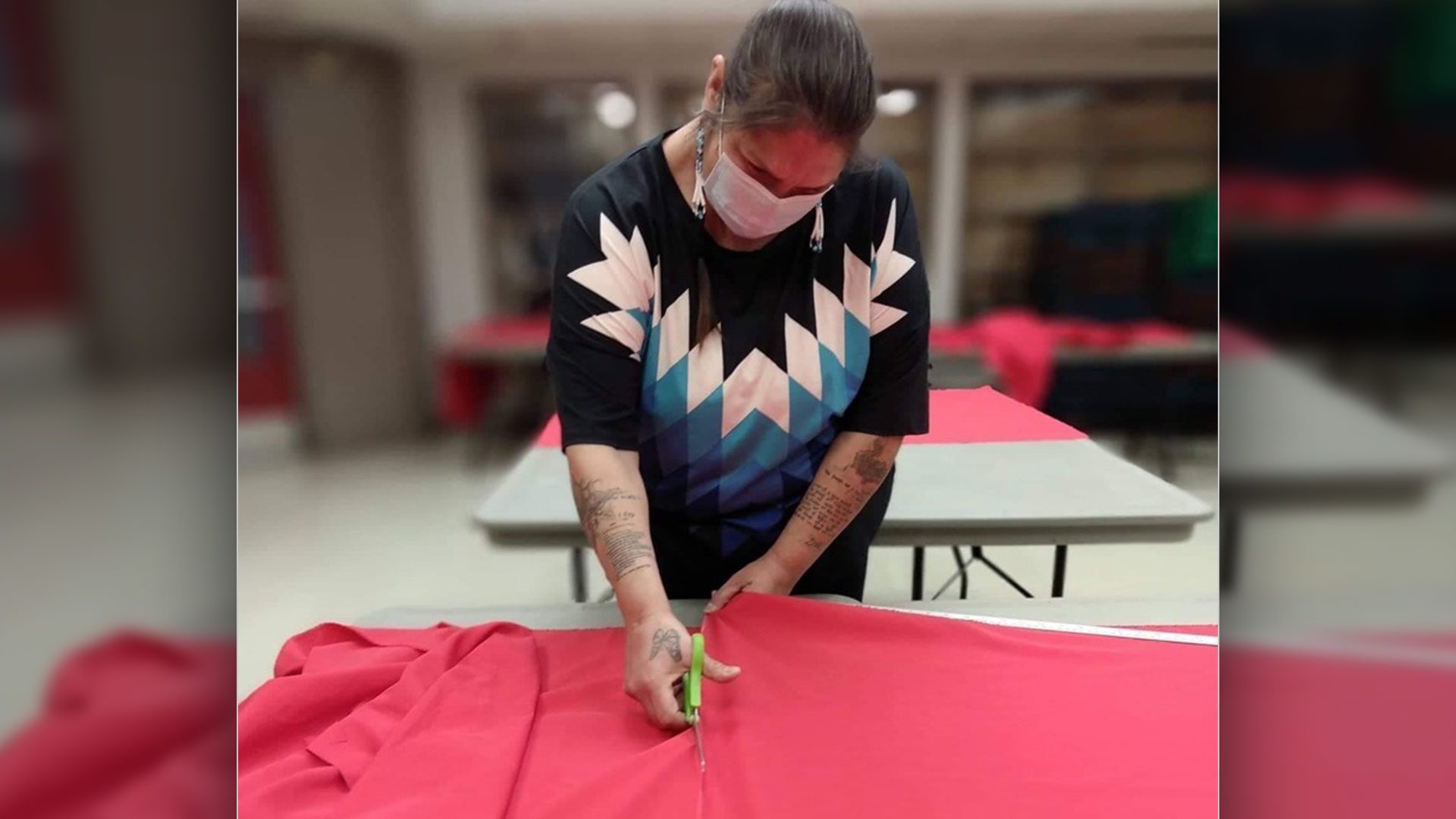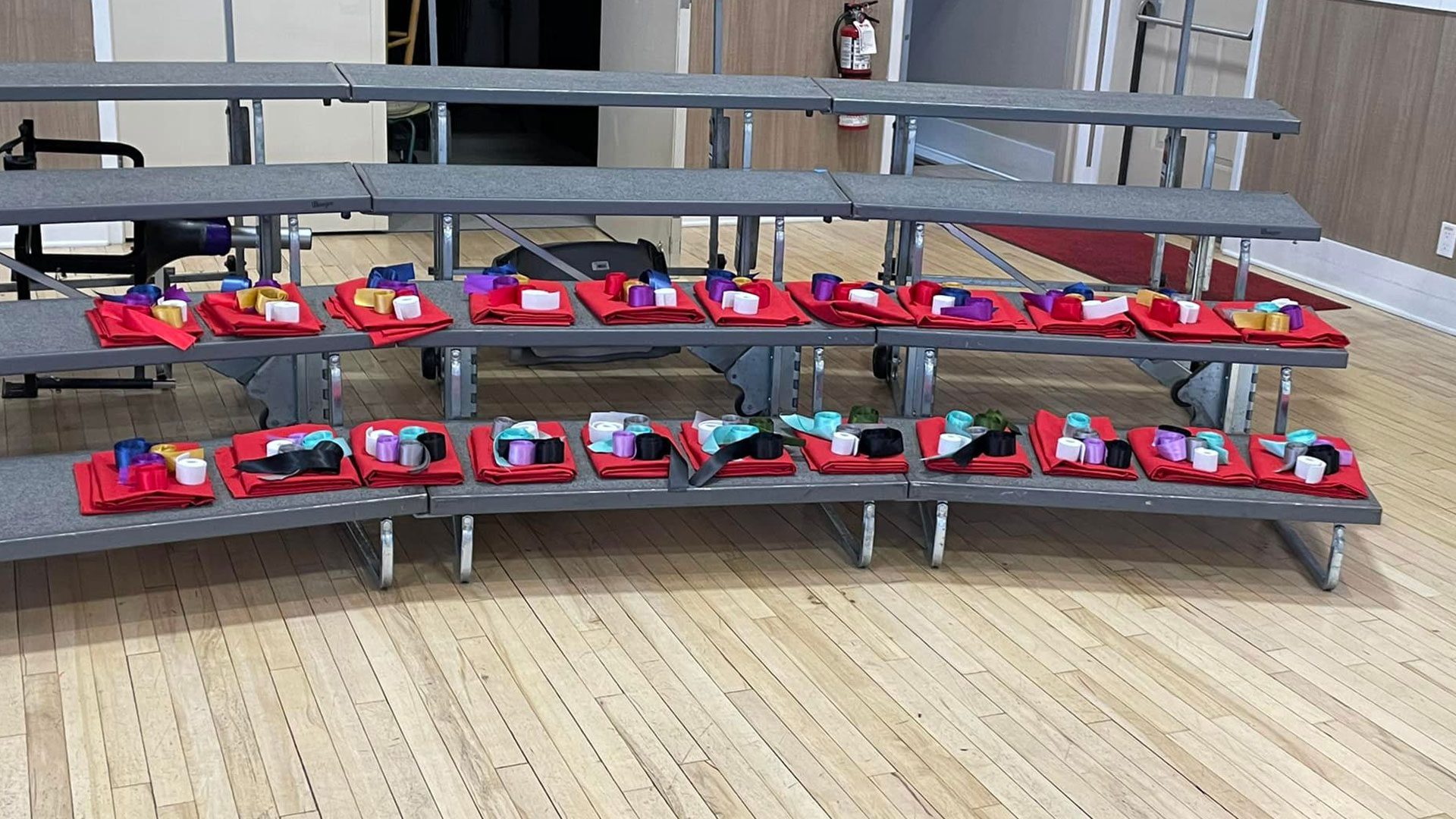
A close-up of some of the skirts made by the Red Ribbon Skirt Project. Photo: Facebook
After a ribbon skirt saved her life, Jamie Smallboy wanted to use its healing power to help others.
So the Cree woman started the Red Ribbon Skirt Project three years ago.
Volunteers sew the traditional First Nations skirts in red – the colour that symbolizes missing and murdered Indigenous women and girls – and gift them to grieving relatives.
“It’s just a beautiful movement, it really is,” said Smallboy, who lives in Vancouver.
“It’s really reaching a lot of people.”

The project grew out of the Annual Women’s Memorial March in downtown Vancouver that remembers missing and murdered Indigenous women and girls.
Smallboy and her volunteers personally hand out the skirts following the speeches, healing circle and community feast.
“I had this whole fire that started with the march,” Smallboy said. “We took embers from that fire to start the Red Ribbon Skirt Project.”
The number of missing and murdered Indigenous women and girls in Canada has been called an epidemic, with some groups putting the figure as high as 6,000.
Smallboy said she was at risk of joining that tragic group when she was homeless and living on the street.

Then, one day, she heard the drums from the annual march.
“I followed the drum and I didn’t know this happened…It was amazing,” recalled Smallboy. “I saw thousands of women marching, and I saw the smudge burning and women praying. And so many people singing, it made me cry.”
That’s when she decided to begin her own healing journey.
But when she returned to her First Nation of Maskwacis in Alberta, she didn’t have the proper dress to attend ceremony. The two ribbon skirts she was gifted changed everything.
“That was such a proud moment for me,” Smallboy said. “It’s like I earned that. That meant so much to me, and I still have them.”

Then when she learned to make the skirts alongside her own family members and heard the lessons of resilience and survival that accompany the creations, she knew what she wanted to do.
“I came home to Vancouver and wanted to share them, because not everybody has the opportunity to go home and learn, you know?”
Smallboy said the group has handed out nearly 350 skirts sewn with the help of friends, relatives and non-Indigenous volunteers.
“They taught me last year how to use a sewing machine,” said her nephew, Richard Smallboy, with a laugh.“I like the community, even if I’m not wearing a skirt.”
Richard helped Jamie incorporate the project as a not-for-profit organization so it can receive donations of cash and supplies, especially skirt material.

Their work has been steadily expanding eastward with sewing groups operating in Calgary, Edmonton and Regina. Jamie said she has also been invited to bring the project into schools.
“It’s really reaching a lot of people,” she said. “That’s the beauty of it all.”
Smallboy posts the dates and times volunteers can drop in to help sew on the project’s Facebook page.
Carol Martin, a veteran organizer of the 31-year Vancouver memorial march, feels the skirts are a meaningful gift for families.
“When [Jamie] came forward, she was talking about the red skirt, the sacredness of it, and how we need to bring that back full circle to who we are as Indigenous women,” Martin said.
“That’s like the roots of who we are. And so, I think, it’s going to have a huge impact. For me, I see that it is really, really going to do something, and it really is something.”









